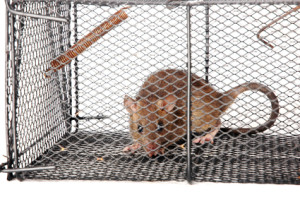Medication Assisted Treatment (MAT) for addiction comes in various forms that are often (unhelpfully) lumped together into one category. Replacement or substitution methods, like methadone or Suboxone maintenance are radically different from using naltrexone to treat alcohol or opioid use disorders. Yet they are combined into the single category of MAT. While naltrexone is not a cure for addiction, it has been shown to help minimize cravings for urges for both alcohol and opioids. And there is some evidence emerging that it could be useful to blunt cravings for methamphetamine.
In 2010 Karlia et al. did a literature review on pharmacological approaches to treat methamphetamine use disorders. They concluded there was no substantial evidence for effective treatment at the time. “Clinical trials using aripiprazole [Abilify], GABA agents (gabapentin [Neurontin], baclofen, vigabatrin), SSRIs, ondansetron and mirtazapine [Remeron] have failed to show efficacy.” They noted where there was some indication where “agonist replacement medications” like d-amphetamine and modafinil may hold some promise.
The unavoidable problem with “treating” methamphetamine addiction with d-amphetamine is you are using a similarly addictive substance to “treat” methamphetamine addiction. Again, it repeats the error of opioid substitution/replacement therapy. While methamphetamine and amphetamine are Schedule II controlled substances, Modafinil still has an addictive potential as a Schedule IV. It is used to treat narcolepsy and shift work disorder, and it is touted as a “life hack” on Wall Street or “smart pill”—until you decide to stop taking it.
They also pointed to the work of Swedish researcher, Nitya Jayaram-Lindström, who showed in a 2005 study where naltrexone significantly reduced the subjective effects of dexamphetamine and blocked cravings in dependent patients. Additionally, the frequency and amount of amphetamine use was significantly reduced. A double blind study by Jayaram-Lindström in 2008 again showed the efficacy of naltrexone in reducing cravings and self-reported use of amphetamine. A further double-blind, placebo-controlled study by Jayaram-Lindström again demonstrated a significant reduction in cravings and self-reported use of amphetamine. “Naltrexone therefore appears to be a highly promising medication for amphetamine dependence.”
Now there is a study by UCLA researchers on naltrexone as a treatment for methamphetamine addiction. Here is a link to a pre-publication manuscript of the study by Ray et al. Again it was found that naltrexone blunted cravings for methamphetamine and lowered self-reports of subjective effects. Lara Ray, a UCLA psychology professor said: “The results were about as good as you could hope for.” The UCLA press release on the study and an article on The Fix by Zachary Siegel noted where clinical trials into the efficacy of naltrexone to treat methamphetamine addiction have already begun.
One clinical trial with naltrexone was completed and last updated in May of 2013 but no results are posted yet; and another study is ongoing. Although results for the complete trail by California Pacific Medical Center Research Institute were not posted on Clinicaltrails.gov, it does seem to be reported in a 2015 study by Pal et al. reported in the Journal of Addictive Medicine. There was not an improved treatment response found in this study. The Pal et al. study was quite small and does not really argue against further clinical trials into the potential use of naltrexone to treat methamphetamine addiction. The replication of Jayaram-Lindström’s results by Ray et al. are sufficient to see further research into this potential treatment.
The side effects from naltrexone are minimal, making it a viable medication to assist addicts trying to establish and maintain abstinence from dependence upon alcohol, opioids, and now—apparently—methamphetamine. Substitution or replacement medications for addiction need to be distinguished from other medications such as naltrexone within the catchall category of MAT. Perhaps they would be better labeled as SAT—Substitute Addiction Treatment—or RAT—Replacement Addiction Treatment—instead of MAT, Medication Assisted Treatment. Personally, I’m partial to RAT.

